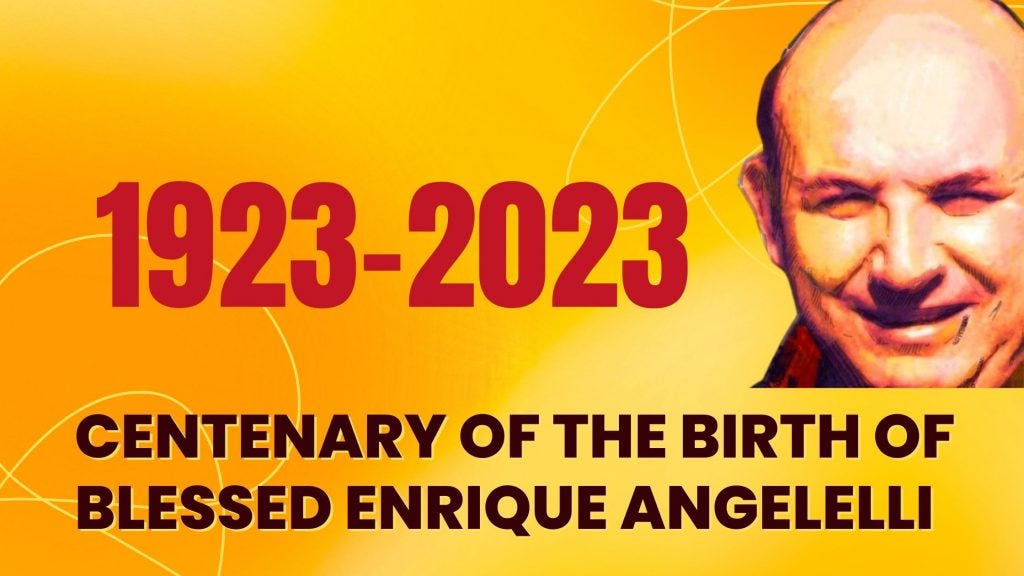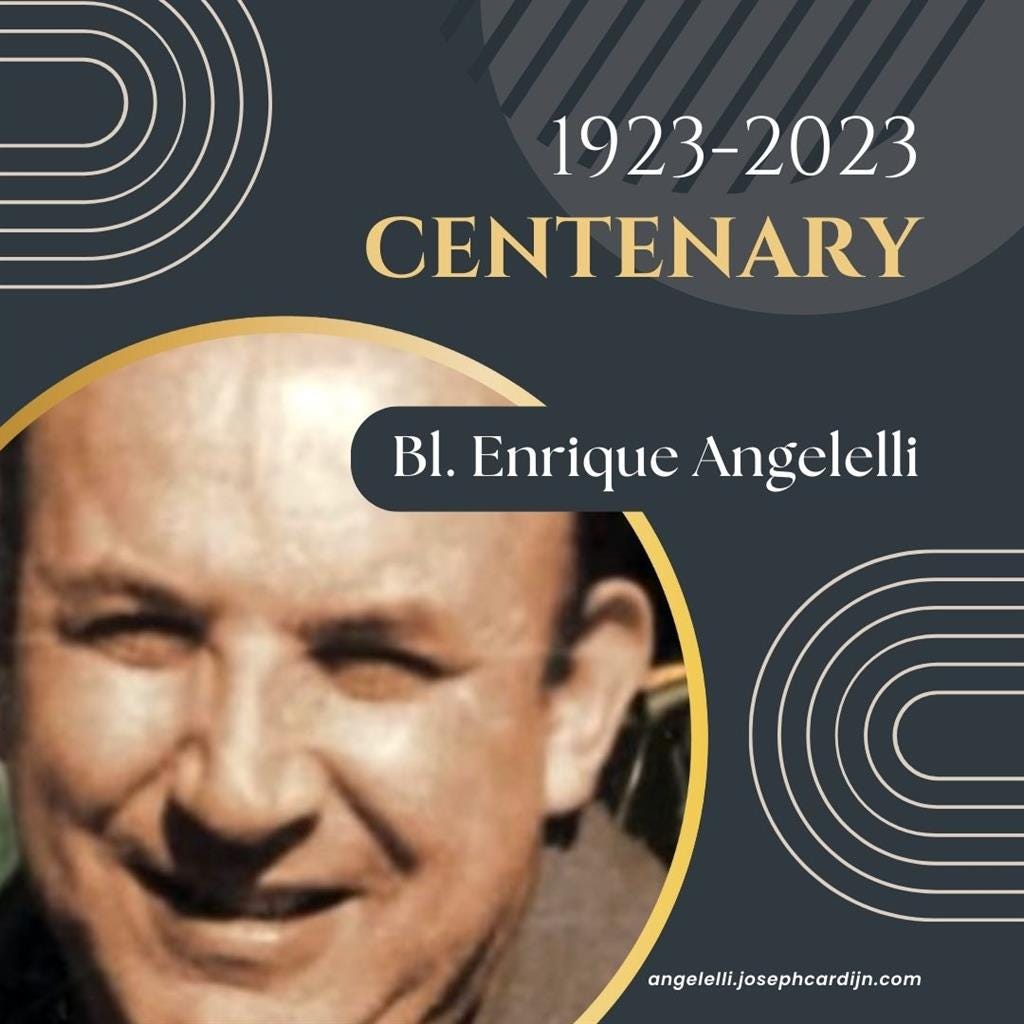Blessed Enrique Angelelli, first martyr of Vatican II
This year marks the centenary of the birth of the martyred Blessed Enrique Angelelli, co-founder of the JOC in the Diocese of Cordoba, with Pepe Palacio, also killed several months before Angelelli.
I’ve long thought of Angelelli as the “first martyr of Vatican II.” Hence, the article below, which I wrote on the occasion of his beatification along with his priests, Gabriel Longueville and Carlos de Dios Murias and lay pastoral worker, Wenceslao Pedernera.
Since then, I’ve often thought of all of them as models for a synodal Church, bishops, priests and lay people, committed to building a Church of the Poor.
Stefan Gigacz
Blessed Enrique Angelelli, first martyr of Vatican II
Read more at: https://international.la-croix.com/news/religion/angelelli-first-martyr-of-vatican-ii/7799
Concluding a 40-year personal journey, Pope Francis promulgated a decree on June 9 recognizing the martyrdom in 1976 of Bishop Enrique Angelelli Carletti and three of his co-workers, the French Fidei Donum priest, Gabriel Longueville, the Franciscan Father Carlos de Dios Murias and the lay pastoral worker Wenceslao Pedernera.
All four were killed by assassins linked to the military during the “Dirty War” that ripped Argentina apart during the late 1970s.However, it was Pope Francis himself, then the Archbishop of Buenos Aires, who first propelled the case of Bishop Angelelli into the limelight in a 2006 speech commemorating the 40th anniversary of the latter’s death.
Citing Tertullian’s dictum that “the blood of the martyrs is the seed of the church,” Cardinal Bergoglio noted that Angelelli had “stones thrown at him because he preached the Gospel and shed his blood for it.”
It was the first public recognition by the church of the real manner of Angelelli’s death, which the Argentine government had long dismissed as a car accident. Not until 2014, were the military officers involved finally convicted of Angelelli’s murder.
Like Pope Francis, Angelelli was the son of Italian immigrants. Born in the city of Córdoba on June 17, 1923, he entered the Our Lady of Loreto minor seminary at the age of 15 before being sent to complete his studies in Rome.T
here, in a decisive encounter, he met the Belgian priest and founder of the Young Christian Workers (JOC-YCW) movement, Joseph Cardijn. Following his ordination and return to Argentina in 1949, he immediately set out to launch the JOC in the Diocese of Córdoba.In this task, he partnered with a young layman and protégé, José Serapio Palacio, soon to become a national leader (with his future wife Amalia Castanos), a commitment that he later carried on as trade unionist and in the promotion of an adult Christian Worker movement.
Angelelli, meanwhile, had himself become renowned for his work with the JOC and with its university students’ counterpart, the JUC. It may even be that Cardijn had his own ambitions for Angelelli perhaps as his eventual successor at the JOC Internationale.
But John XXIII beat him to the punch in December 1960, appointing the 37-year old Angelelli as Auxiliary Bishop of Córdoba.”The Argentine JOC has lost one of its most ardent chaplains,” Cardijn and the Canadian president of the JOC Internationale, Romeo Maione, said in a 1961 letter to Angelelli, “but it has gained a bishop who joins those other (bishops) who pioneered the JOC in Argentina and Latin America.”
Meanwhile, Angelelli wasted no time in announcing the line he would maintain throughout his episcopate.
“With one ear I listen to the Gospel and with the other I listen to the people,” he wrote.Sadly, it did not take long before Angelelli found himself at odds with his Archbishop Ramón José Castellano, who asked him to abandon the use of his motorcycle, a request that the new bishop declined. But other more serious conflicts also soon arose.
Angelelli repudiated a request from local Catholic factory owners to punish priests who were supporting workers in their claims for better wages and conditions.
“If these injustices continue, some day bosses and parish priests will face the firing squad,” Angelelli warned.
Soon after, less than two years after his appointment, Angelelli traveled to Rome for the First Session of Vatican II in October 1962 where he sat as the youngest Council Father.
Here, he worked closely with other jocist-formed bishops from Latin America, including Manuel Larrain (Chile), Helder Camara (Brazil), Ramon Bogarin (Paraguay), Marcos McGrath (Panama) and Leonidas Proaño (Ecuador).Together, they promoted a conception of lay apostolate oriented to the transformation of the world in light of the Gospel and a bottom-up church focused on the people and particularly the poor.
Once the Council ended, Angelelli worked hard to implement its decisions and orientations. In 1966, he was elected vice-president of the new Episcopal Special Commission for Pastoral Planning (COEPAL), where he played a leading role in the development of the Argentine version of liberation theology known as the “theology of the people.”
In 1968, he gave his tacit support to the launch of the radical Movimiento de Sacerdotes para el Tercer Mundo (Movements of Priests for the Third World or MSTM).Unlike many conservative Argentine bishops, he backed the decisions adopted by the Latin American Bishops Conference (CELAM) at their meeting in Medellin, Colombia in 1968. In 1971, he presided over the Argentine bishops’ commission preparing for the Synod on Justice in the World.
Unsurprisingly, Angelelli’s work continued to attract much opposition. Amid growing conflict in Córdoba, he was appointed in August 1968 as bishop of the desert Diocese of La Rioja.There in the foothills of the Andes, Angelelli made it a pastoral priority to reach out to farmers and laborers. He did not hesitate to involve himself in labor issues, including founding a union for maids and promoting cooperatives.
He backed a program of land reform that quickly drew him into conflict with local landowners. In 1973, a group of local winegrowers entered a church where he had celebrated mass, denouncing him as a Marxist.
It was during this period of conflict that the young Jesuit Bergoglio visited La Rioja on retreat, where he was deeply impressed by Angelelli.
But the die was now cast as Argentina descended deeper into social conflict. In December 1975, his earliest collaborator, Jose Palacio, now a lay collaborator for the JOC Internationale who had just returned from a workers meeting in Colombia, “disappeared.” By now, Angelelli certainly knew that he too was a marked man.
Seven months later, on July 18, 1976, it was the turn of the La Rioja priests Longueville and Murios to be abducted and killed. A week later, Wenceslao Pedernera, an organizer with the Movimento Rural Catolico (Catholic Rural Movement), was gunned down at home in front of his family.
Finally, on Aug. 4, while returning from their funerals, Angelelli’s own truck was run off the road where he was finished off by assassins acting on the orders of the former army chief, Luciano Benjamin Menendez, and ex-vice commodore Luis Fernando Estrella.
Pope Francis’ decree appropriately recognizes their martyrdom as Christians. They will be the first of many martyrs of Argentina’s Dirty War whose sacrifices also await recognition while Angelelli may perhaps be remembered as the first martyr of Vatican II.
Author
Stefan Gigacz
First published
https://international.la-croix.com/news/religion/angelelli-first-martyr-of-vatican-ii/7799



